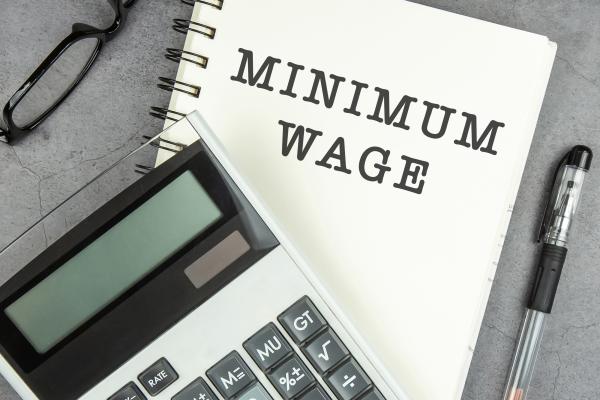
The Low Pay Commission (LPC) is an independent advisory body that provides recommendations to the Government on setting the National Minimum Wage (NMW) and National Living Wage (NLW).
Its aims to balance fair pay with the economic impact on employers, particularly in low-wage sectors and industries.
The LPC’s recommendations on updates to the NMW and NLW rates from 1 April 2025 were accepted in full in the Autumn Budget last year, with the Government confirming the rates will increase as follows:
| NEW RATE | RATE INCREASE | PERCENTAGE INCREASE | |
|---|---|---|---|
| National Living Wage (21 and over) |
£12.21 |
£0.77 |
6.7% |
| 18-20 Year Old Rate |
£10.00 |
£1.40 |
16.3% |
| 16-17 Year Old Rate |
£7.55 |
£1.15 |
18.0% |
| Apprentice Rate |
£7.55 |
£1.15 |
18.0% |
These recommended rates are covered in the LPC’s most recent report on the NMW.
But the report goes into much more than hourly rates – it also explains the LPC’s research findings which informed its recommendations.
Data and Insights Behind the LPC’s Recommendations
The evidence and analysis which informed the LPC’s recommendations for NMW rates from April 2025 included.
- Economic Context & Labour Market:
- Economic growth in 2024 was stronger than expected, but productivity remains low. There are fewer job vacancies, but demand for low-paid workers remains robust.
-
Wage growth has slowed but real wage increases are expected to continue, which means employers will continue to face higher wage costs.
- Living Costs:
- Inflation, particularly in energy, rents, fuel, and food, has disproportionately impacted low-paid workers and lower-income households.
- While inflation has slowed, workers remain concerned about the effects of past price hikes on living standards, especially for those earning the NLW.
-
Although the NLW has kept pace with rising living costs, employers are likely to continue feeling pressure to adjust wages in line with inflation and higher living costs, while managing profitability.
- NLW Impact on Employers:
- Employers, especially small businesses in low-paying sectors, are struggling with the impact of NLW increases, with concerns expressed over debt and potential insolvencies.
- Many employers have responded to NLW increases by raising prices, but have struggled to do so as consumer spending tightens and inflation has slowed.
-
Increases in the NLW have reduced the pay differential between workers on the NLW and those just above it, creating challenges for retention, recruitment, and staff morale as employees see fewer incentives to progress.
- Youth & Apprentice Labour Markets:
- Despite increases in minimum wages for younger workers, employers have not seen significant negative impacts on employee numbers or hours worked.
-
However, the Apprentice Rate appears to be a challenge for employers, as the LPC found declining numbers starting apprenticeships among age groups that rely on this rate.
This article reflects the position at the date of publication. If you are reading this at a later date you are advised to check that that position has not changed in the time since.
We regularly publish articles on a range of tax and wider topical issues which affect employers. If you wish to subscribe to our monthly Employer Focus e-newsletter, please contact us.















